|
[ UrbanRail.Net ] [ Europe ] [ Americas ] [ Asia ] [ Africa ] [ Oceania ] [ News ] [ Books ] [ Links ] |
|
JAIPUR
|
| Rajasthan . India |
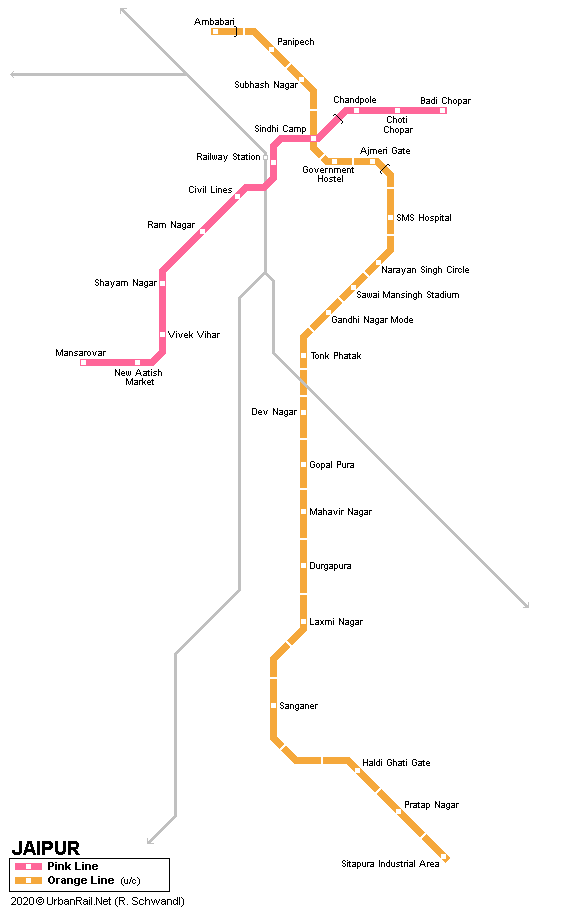
|
[ UrbanRail.Net ] [ Europe ] [ Americas ] [ Asia ] [ Africa ] [ Oceania ] [ News ] [ Books ] [ Links ] |
|
JAIPUR
|
| Rajasthan . India |

| METRO |
|
Jaipur is the capital of the Indian state of Rajasthan, and located some 240 km southwest of Delhi. Construction of a basic 2-line metro system started in Nov 2010: |
| Pink Line |
|
(east-west): 12 km; 11 stations (3 underground, 8 elevated) 03 June
2015: Mansarovar - Chandpole (9.7 km) |
|
|
| Orange Line |
|
(north-south): Ambabari - Sitapura; 23.1 km; 20 stations (5 underground, 15 elevated) planned
|
| Photos |
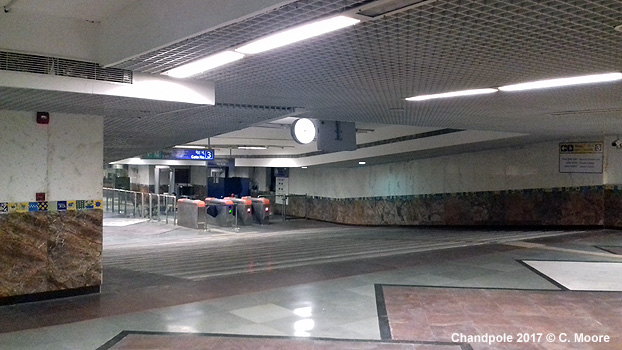
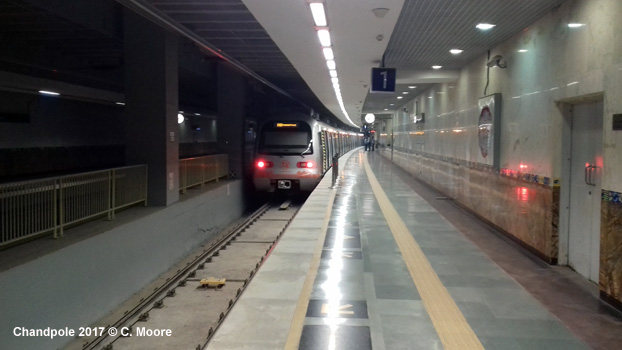
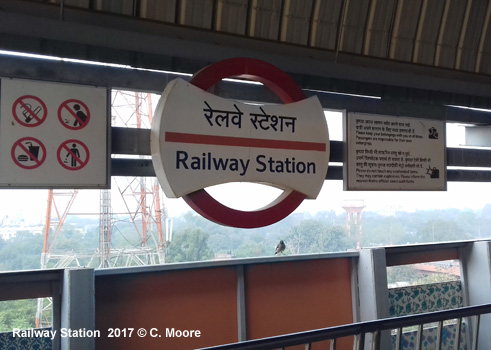
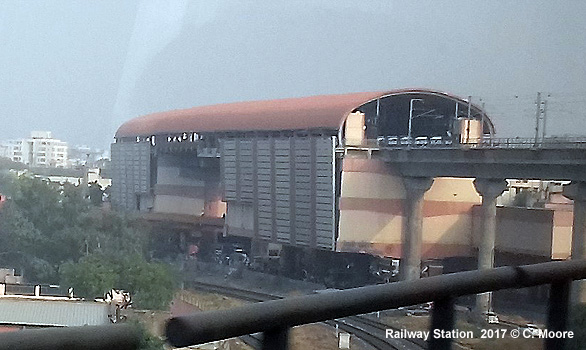
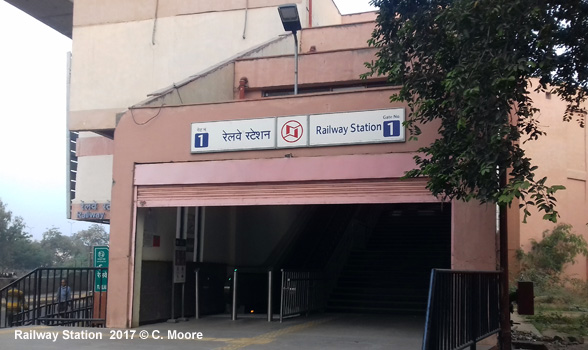
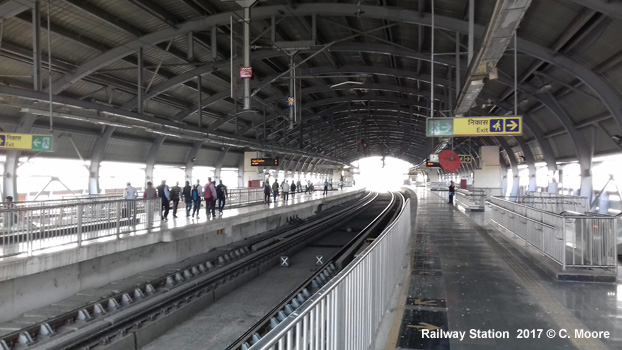
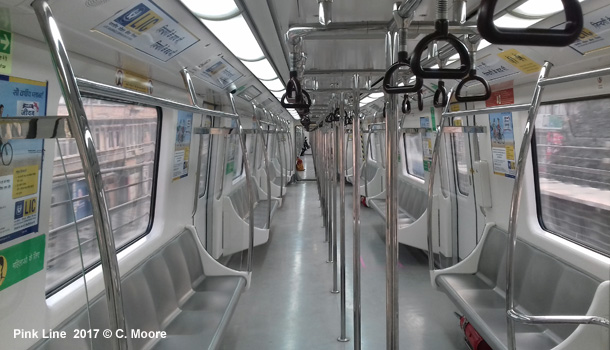
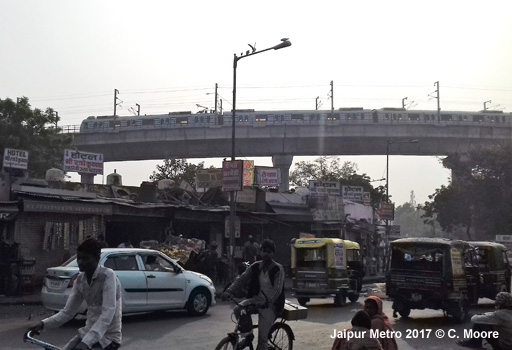
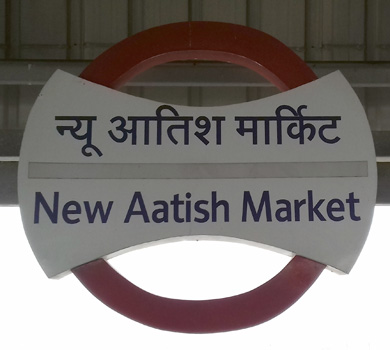
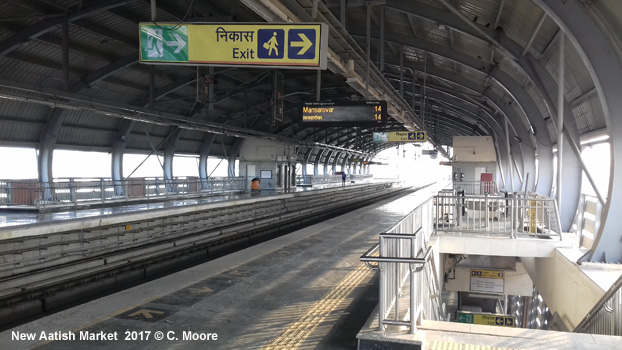
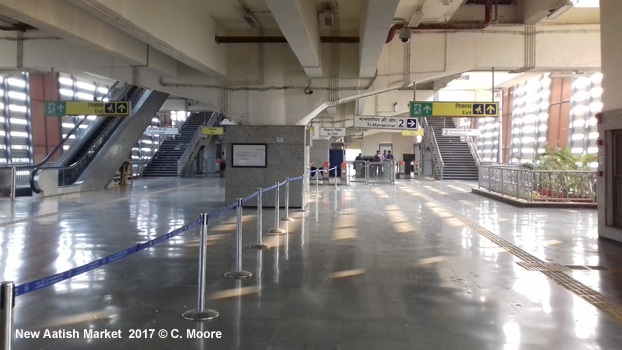
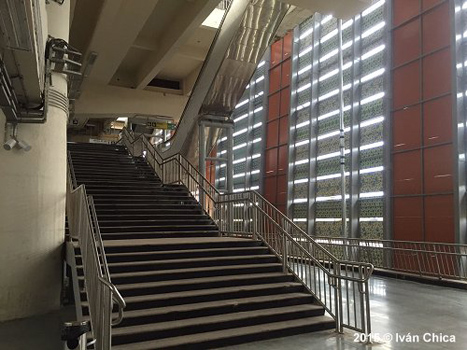
|
| Links |
|
Jaipur Metrorail (Official Website) Jaipur Metro at Wikipedia Jaipur Metro Projects (TheMetroRailGuy)
|
| Report |
|
In Nov 2017, Craig Moore reports from Jaipur: Jaipur Metro The historic capital of Rajasthan was the sixth city in India to operate a Metro. The 9.6km line (9.0km revenue track) is operated by JMRC and runs in a southwesterly direction from the central area of Chandpole. Chandpole is the only underground station on the system and is quite shallow. The station is nondescript with two basic entrances (security/ticket office/ticket barriers), a featureless interior of corridors and shallow steps to the platform area. Here there are two tracks and two side platforms but currently only the northern track/platform is used and acts as the terminus. The platform continues the unremarkable feel of the entrance but has basic RTI and roaming security staff. To the east the tunnel for the 2.4km extension under the old city to Badi Chaupar is in full view in preparation for the opening in 2018. On leaving the station in a westward direction, the train almost immediately starts a gentle climb up the ramp to the elevated section (0.3km underground). The train here travels very slowly on the stretch to Sindhi Camp and continues at a pretty slow pace on a twisting section to Railway Station (4mins walk to the beautifully ornate Indian Railways station). The less meandering section from here to Vivek Vihar offers some wonderful views of the city and the Nahragarh hilltop fort, but the speeds remain relatively slow. At the southern terminus of Mansarovar the depot is located to the south of the station. The entire 9km journey takes 23mins – very slow! The 8 elevated stations on the line are almost identical. These are huge structures that can be seen for some distance with a pale pink exterior and horizontal side beams containing images of local flora and fauna. The entrances are basic (no totem) and lead to ticket office selling single tokens, smartcards and a day ticket. Security checks and ticket barriers (normally two/three) are also negotiated here. There is no hard-copy information available but at this level there is a basic system map (including Line 2) which is tucked away on a side wall (probably out of embarrassment - it is awful). Stairs or escalator lead to a mezzanine (this level contains the barriers at some stations) and then the final level is the platforms. These have side platforms, basic RTI information, the roundel and perfunctory strip map. The platforms are built for 6 carriages although only 4-car trains are used at the moment. All elevated stations have an arched corrugated roof. And so the station structures are massively overbuilt to meet the needs of the great height of the elevated track. They are also quite grubby and worn for their young age. Using the system is straightforward. All the staff and security personnel are very friendly and signage is basic but adequate. Fares are distance-based (6-17 Rupee) (€0.08-0.22) with entrance via a token purchased at the ticket office or the very occasional automated machine. Day tickets are also available (Card deposit required). At peak periods (1700-2145) fares are 50-80% higher. Services operate from 0630-2145 and have 15min headways (10min headways after 1730) and operate with Bengalaru built BEML 4 car stock with overhead power supply. The train exterior is metallic silver with a pale orange side stripe whilst the interior is bright with side metallic seating (very slippy). Trains have audio and electronic information in Hindi and English and above door strip maps. They also have power sockets to charge mobile phone etc. Interestingly, unlike most Indian Metros, this system does not appear to have women only carriages or standing areas on platforms, although there are small ‘women only’ seating zones in each carriage (2/4 seats). The system is not well used and even with 15min headways there are few passengers, trains running pretty empty for most of the journey. The stations are grubby and there is a rather desolate, almost pitiful feel to the system. Quite a disappointing experience.
|
|
|